Mathematical Formulations for Predicting Pressure Drop in Solid–Liquid Slurry Flow through a Straight Pipe Using Computational Modeling
Abstract
1. Introduction
2. Mathematical Formulation
2.1. Governing Equations for Multiphase Flow
2.1.1. Continuity Equation
2.1.2. Momentum Equation
3. Numerical Modeling
3.1. Model Geometry
3.2. Mesh Geometry
3.3. Boundary Condition and Conversion Criteria
3.4. Numerical Model Validation
4. Results and Discussion
4.1. Concentration Distribution
4.2. Generalized Pressure Gradient Correlation Equation
4.3. Pressure Drop Equation
4.4. Mathematical Model Validation
5. Conclusions
- The mathematical correlation models demonstrated excellent predictive capabilities for pressure drop, validated against experimental data from Kaushal et al. [18]. The concentration distribution obtained through the CFD model was also validated against experimental results for d50 = 125 µm at Vm = 4 m/s and Cvf = 30%.
- Slurries featuring smaller particle diameters, lower volumetric concentrations, and lower velocities exhibited minimal concentration distribution. Conversely, larger particle diameters, higher flow velocities, and higher volumetric concentrations correlated with increased concentration distribution. Maximum concentration intensity was observed at the bottom of the pipe.
- A mathematical formulation was introduced using a second-order polynomial correlation equation to predict “Z”, representing the pressure gradient. Developed with MATLAB code, Equation 27 accurately predicted the pressure gradient for particle diameters of d50 = 75–175 µm, volumetric concentrations of Cvf = 10–20%, and Reynolds numbers of 35,000 ≤ Re ≤ 210,000.
- A novel mathematical equation, dependent on mean flow velocity (v), particle diameter (d), and volumetric concentration (Cvf), was proposed. Pressure drop values obtained from this model were compared with experimental and CFD values. Equation 41 accurately predicted the pressure gradient for particle diameters of d50 = 75–175 µm, volumetric concentrations of Cvf = 10–50%, and Reynolds numbers of 20,000 ≤ Re ≤ 320,000.
Author Contributions
Funding
Data Availability Statement
Conflicts of Interest
References
- Joshi, T.; Parkash, O.; Krishan, G. Estimation of energy consumption and transportation characteristics for slurry flow through a horizontal straight pipe using computational fluid dynamics. Phys. Fluids 2023, 35, 053303. [Google Scholar] [CrossRef]
- Joshi, T.; Parkash, O.; Krishan, G. CFD modeling for slurry flow through a horizontal pipe bend at different Prandtl number. Int. J. Hydrogen Energy 2022, 47, 23731–23750. [Google Scholar] [CrossRef]
- Zenz, F.A. Two-Phase Fluid-Solid Flow. Ind. Eng. Chem. 1949, 41, 2801–2806. [Google Scholar] [CrossRef]
- O’Brien, M.P. Review of the theory of turbulent flow and its relation to sediment-transportation. Trans. Am. Geophys. Union 1933, 14, 487–491. [Google Scholar] [CrossRef]
- Rouse, H. Modern Conceptions of the Mechanics of Fluid Turbulence. Trans. Am. Soc. Civ. Eng. 1937, 102, 463–505. [Google Scholar] [CrossRef]
- Fundamentals of Multiphase Flow—Google Books n.d. Available online: https://www.google.co.in/books/edition/Fundamentals_of_Multiphase_Flow/F7hEfx2GUPYC?hl=en&gbpv=1&pg=PR13&printsec=frontcover&bshm=rime/1,rime/1 (accessed on 14 September 2023).
- Zandi, I.; Govatos, G. Heterogeneous Flow of Solids in Pipelines. J. Hydraul. Div. 1967, 93, 145–159. [Google Scholar] [CrossRef]
- Worster, R.C.; Denny, D.F. Hydraulic Transport of Solid Material in Pipes. Proc. Inst. Mech. Eng. 1955, 169, 563–586. [Google Scholar] [CrossRef]
- Turian, R.M.; Yuan, T. Flow of slurries in pipelines. AIChE J. 1977, 23, 232–243. [Google Scholar] [CrossRef]
- Newitt, D.M.; Richardson, J.F.; Abbot, M.; Turtle, R.B. Hydraulic conveying of solids in horizontal pipes. Trans. Inst. Chem. Eng. 1955, 33, 93–113. [Google Scholar]
- Condolios, E.; Chapus, E.E. Designing Solids Handling Pipelines. Chem. Eng. 1963, 70, 106686455. [Google Scholar]
- Bantin, R.A.; Streat, M. Mechanism of Hydraulic Conveying at High Concentration in Vertical and Horizontal Pipes; Transport and Road Research Laboratory (TRRL): Wokingham, UK, 1973. [Google Scholar]
- Geldart, D.; Ling, S. Dense phase conveying of fine coal at high total pressures. Powder Technol. 1990, 62, 243–252. [Google Scholar] [CrossRef]
- Gopaliya, M.K.; Kaushal, D.R. A Correlation for Pressure Drop Prediction for Solid-Liquid Slurry Flows through Horizontal Pipelines. Multiph. Sci. Technol. 2020, 32, 311–324. [Google Scholar] [CrossRef]
- Iwanami, S.; Kato, H.; Yamane, R. Pressure Drop in Hydraulic Conveyor through a Horizontal Straight Pipe. Bull. JSME 1964, 7, 552–558. [Google Scholar] [CrossRef]
- Ling, J.; Skudarnov, P.V.; Lin, C.X.; Ebadian, M.V. Numerical investigations of liquid–solid slurry flows in a fully developed turbulent flow region. Int. J. Heat Fluid Flow 2003, 24, 389–398. [Google Scholar] [CrossRef]
- Kaushal, D.; Sato, K.; Toyota, T.; Funatsu, K.; Tomita, Y. Effect of particle size distribution on pressure drop and concentration profile in pipeline flow of highly concentrated slurry. Int. J. Multiph. Flow 2005, 31, 809–823. [Google Scholar] [CrossRef]
- Kaushal, D.R.; Tomita, Y. Experimental investigation for near-wall lift of coarser particles in slurry pipeline using γ-ray densitometer. Powder Technol. 2007, 172, 177–187. [Google Scholar] [CrossRef]
- Kaushal, D.; Thinglas, T.; Tomita, Y.; Kuchii, S.; Tsukamoto, H. CFD modeling for pipeline flow of fine particles at high concentration. Int. J. Multiph. Flow 2012, 43, 85–100. [Google Scholar] [CrossRef]
- Joshi, T.; Parkash, O.; Krishan, G. Numerical Investigation of Slurry Pressure Drop at Different Pipe Roughness in a Straight Pipe Using CFD. Arab. J. Sci. Eng. 2022, 47, 15391–15414. [Google Scholar] [CrossRef]
- Joshi, T.; Parkash, O.; Murthy, A.A.; Krishan, G. Numerical investigation of Bi-model slurry transportation in a straight pipe. Results Eng. 2023, 17, 100858. [Google Scholar] [CrossRef]
- Enwald, H.; Peirano, E.; Almstedt, A.-E. Eulerian two-phase flow theory applied to fluidization. Int. J. Multiph. Flow 1996, 22, 21–66. [Google Scholar] [CrossRef]
- Shi, X.; Zhang, P. Conjugated heat and mass transfer during flow melting of a phase change material slurry in pipes. Energy 2016, 99, 58–68. [Google Scholar] [CrossRef]
- Nayak, B.B.; Chatterjee, D. Numerical investigation of convective heat transfer in pipeline flow of multi-sized mono dispersed fly ash-water slurry. Int. J. Heat Mass Transf. 2017, 108, 1802–1818. [Google Scholar] [CrossRef]
- Lun, C.K.K.; Savage, S.B.; Jeffrey, D.J.; Chepurniy, N. Kinetic theories for granular flow: Inelastic particles in Couette flow and slightly inelastic particles in a general flowfield. J. Fluid Mech. 1984, 140, 223–256. [Google Scholar] [CrossRef]
- Gidaspow, D.; Bezburuah, R.; Ding, J. Hydrodynamics of Circulating Fluidized Beds: Kinetic Theory Approach; Illinois Inst. of Tech., Dept. of Chemical Engineering: Chicago, IL, USA, 1991. [Google Scholar]
- Schaeffer, D.G. Instability in the evolution equations describing incompressible granular flow. J. Differ. Equ. 1987, 66, 19–50. [Google Scholar] [CrossRef]
- Syamlal, M.; Rogers, W.; O’Brien, T.J. MFIX Documentation Theory Guide; USDOE Morgantown Energy Technology Center: Morgantown, WV, USA, 1993. [Google Scholar] [CrossRef]
- Kaushal, D.; Kumar, A.; Tomita, Y.; Kuchii, S.; Tsukamoto, H. Flow of mono-dispersed particles through horizontal bend. Int. J. Multiph. Flow 2013, 52, 71–91. [Google Scholar] [CrossRef]
- Garside, J.; Al-Dibouni, M.R. Velocity-Voidage Relationships for Fluidization and Sedimentation in Solid-Liquid Systems; ACS Publications: Washington, DC, USA, 2002. [Google Scholar] [CrossRef]
- Lai, Z.; Zhao, J.; Zhao, S.; Huang, L. Signed distance field enhanced fully resolved CFD-DEM for simulation of granular flows involving multiphase fluids and irregularly shaped particles. Comput. Methods Appl. Mech. Eng. 2023, 414, 116195. [Google Scholar] [CrossRef]
- Beccati, N.; Ferrari, C.; Parma, M.; Semprini, M. Eulerian multi-phase CFD model for predicting the performance of a centrifugal dredge pump. Int. J. Comput. Methods Exp. Meas. 2019, 7, 316–326. [Google Scholar] [CrossRef][Green Version]
- Joshi, T.; Parkash, O.; Krishan, G. Slurry flow characteristics through a horizontal pipeline at different Prandtl number. Powder Technol. 2022, 413, 118008. [Google Scholar] [CrossRef]
- Joshi, T.; Parkash, O.; Krishan, G.; Murthy, A.A. Numerical investigation of Bi-model slurry transportation through horizontal pipe bend. Powder Technol. 2023, 418, 118284. [Google Scholar] [CrossRef]
- Joshi, T.; Parkash, O.; Gallegos, R.K.B.; Krishan, G. Computational investigation of transportation and thermal characteristics in a bi-modal slurry flow through a horizontally placed pipe bend. Powder Technol. 2024, 442, 119879. [Google Scholar] [CrossRef]
- Joshi, T.; Parkash, O.; Gallegos, R.K.B.; Krishan, G. Parametric investigation of slurry transport: Computational insight into the impact of particle composition and Prandtl numbers. Phys. Fluids 2024, 36, 023308. [Google Scholar] [CrossRef]
- Joshi, T.; Sharma, R.; Mittal, V.K.; Gupta, V.; Krishan, G. Dynamic Analysis of Hip Prosthesis Using Different Biocompatible Alloys. ASME Open J. Eng. 2022, 1, 011001. [Google Scholar] [CrossRef]
- Joshi, T.; Sharma, R.; Mittal, V.K.; Gupta, V.; Krishan, G. Dynamic Fatigue Behavior of Hip Joint under Patient Specific Loadings. Int. J. Automot. Mech. Eng. 2022, 19, 10014–10027. [Google Scholar] [CrossRef]



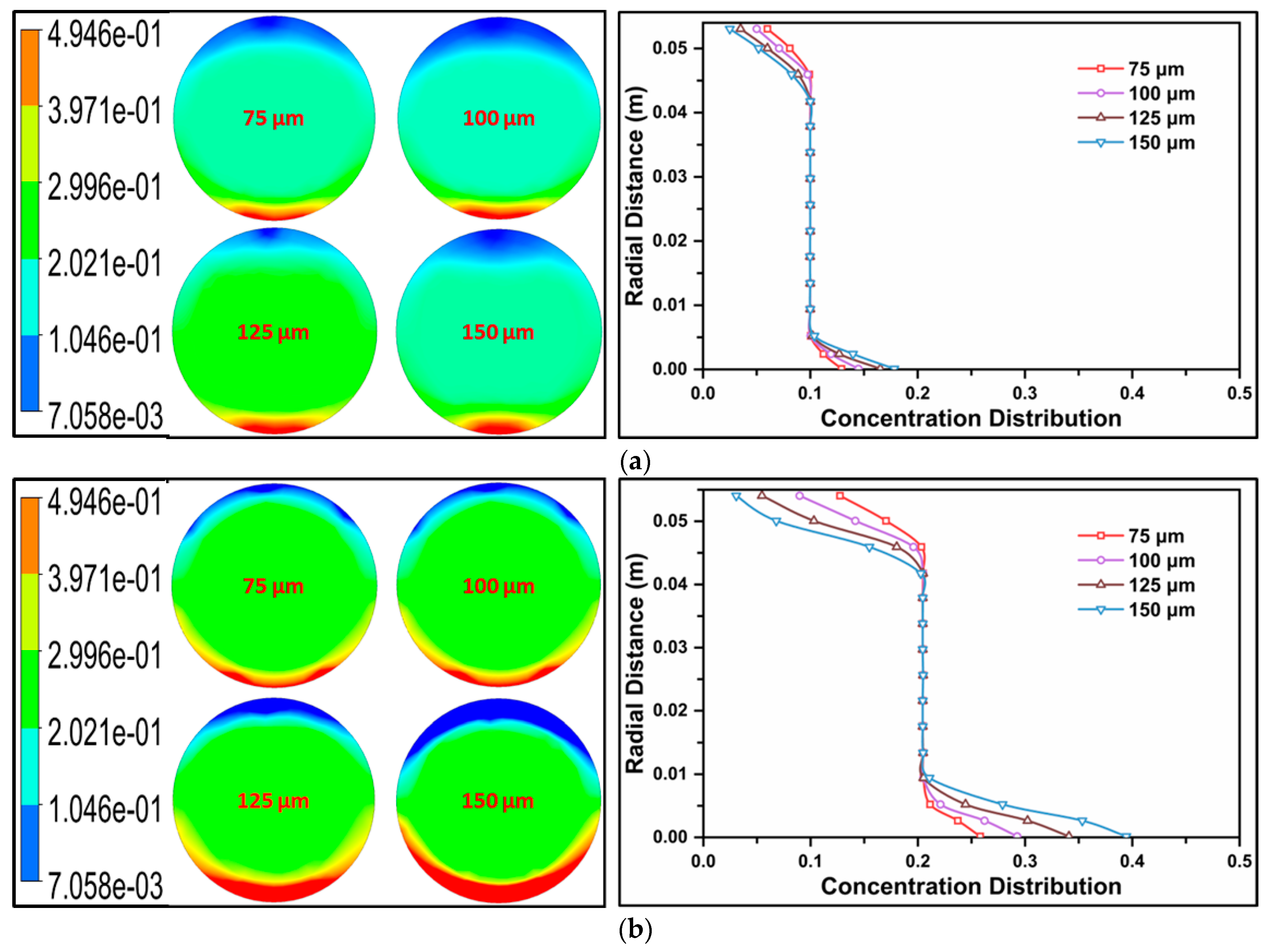
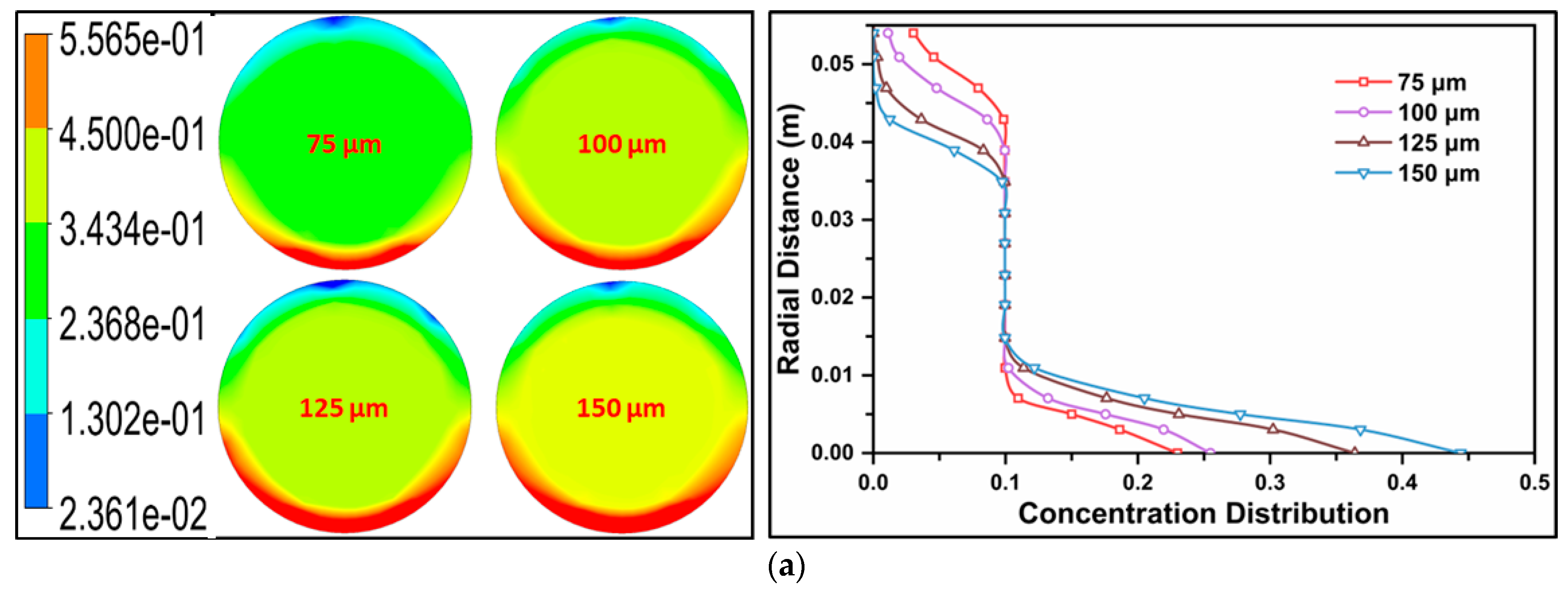

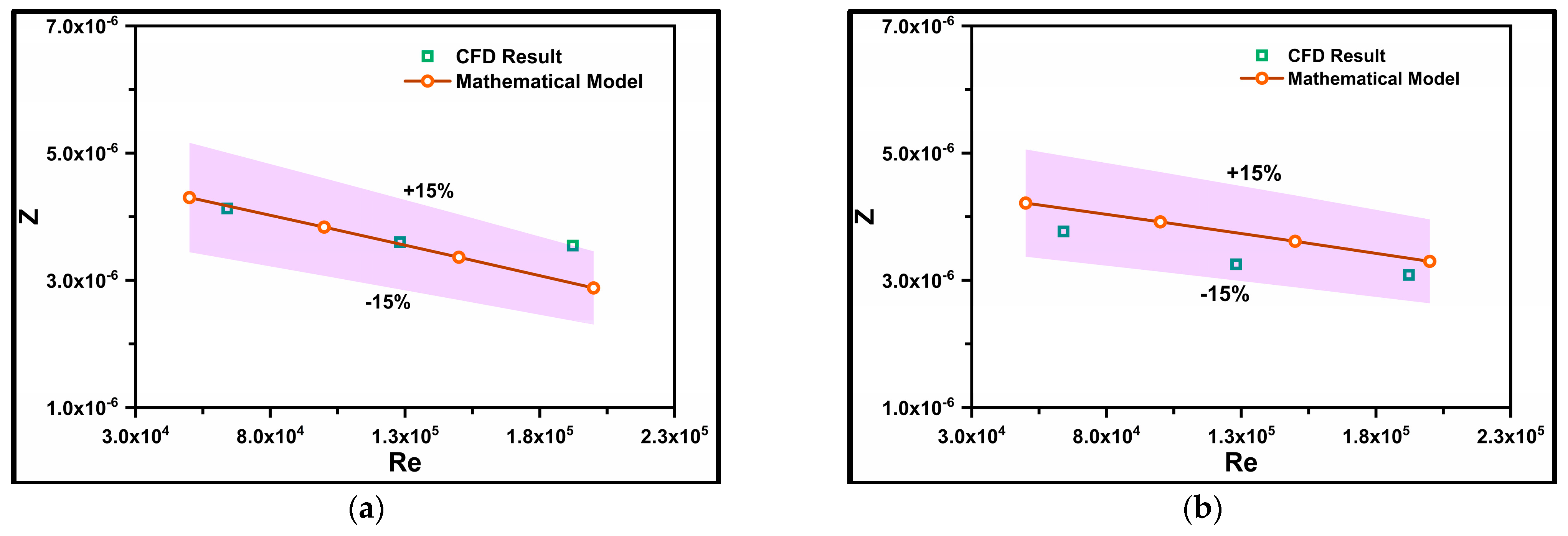
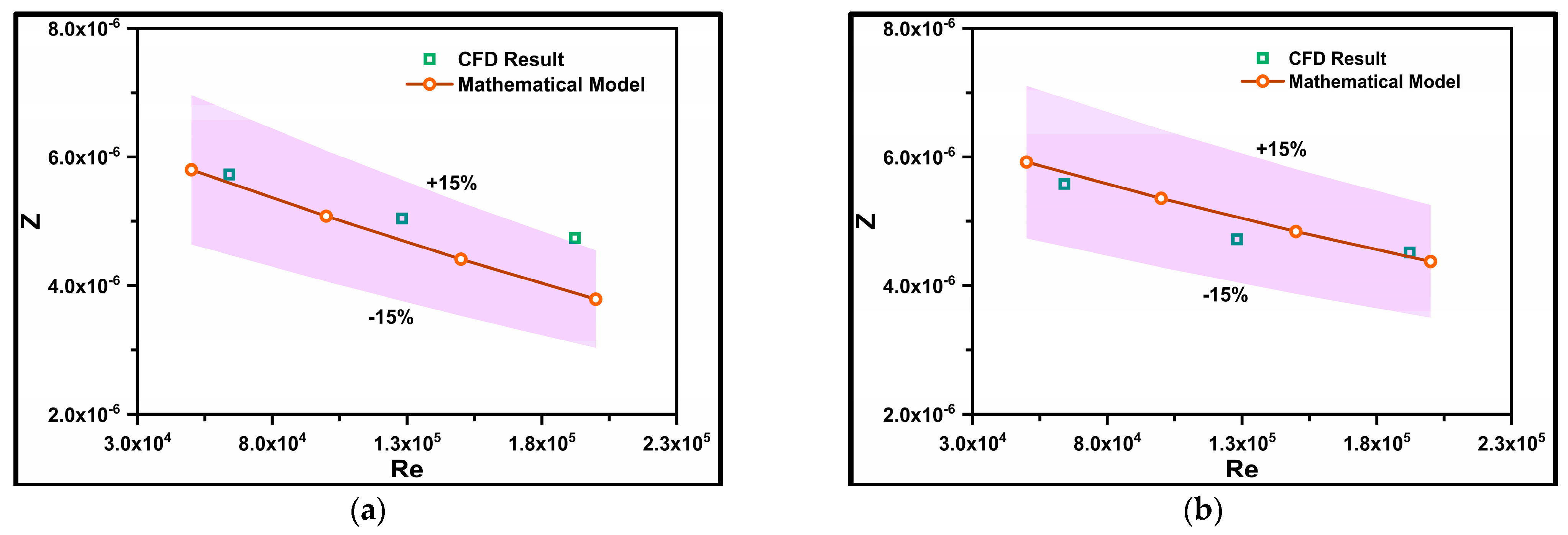
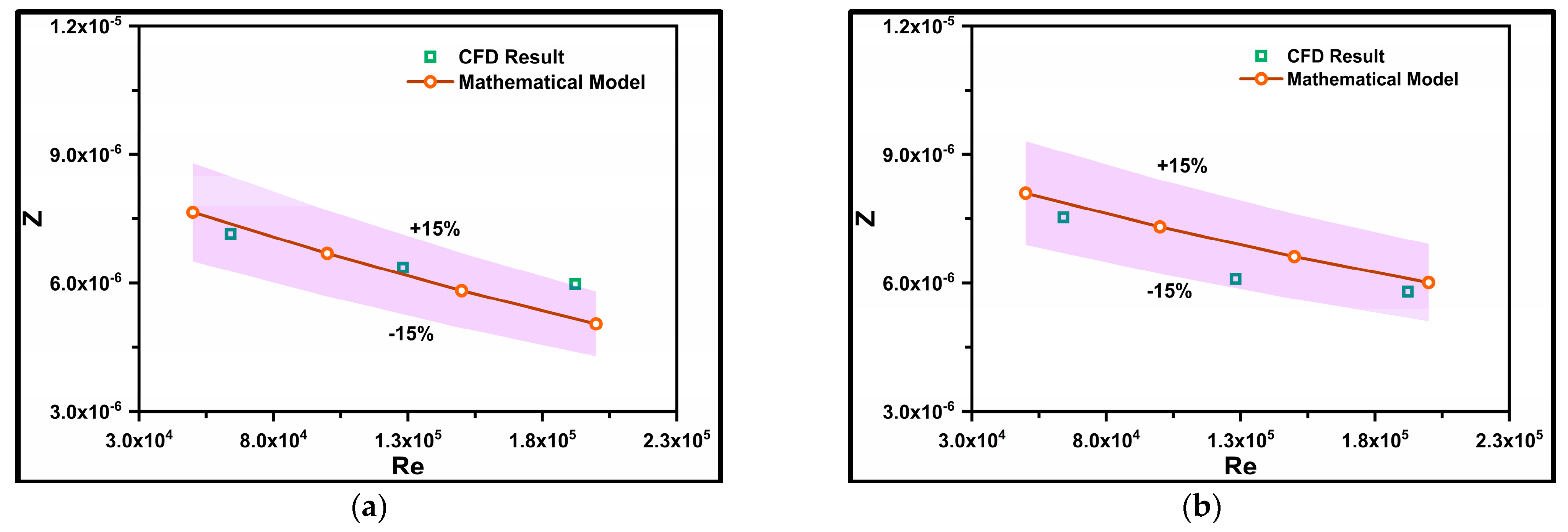


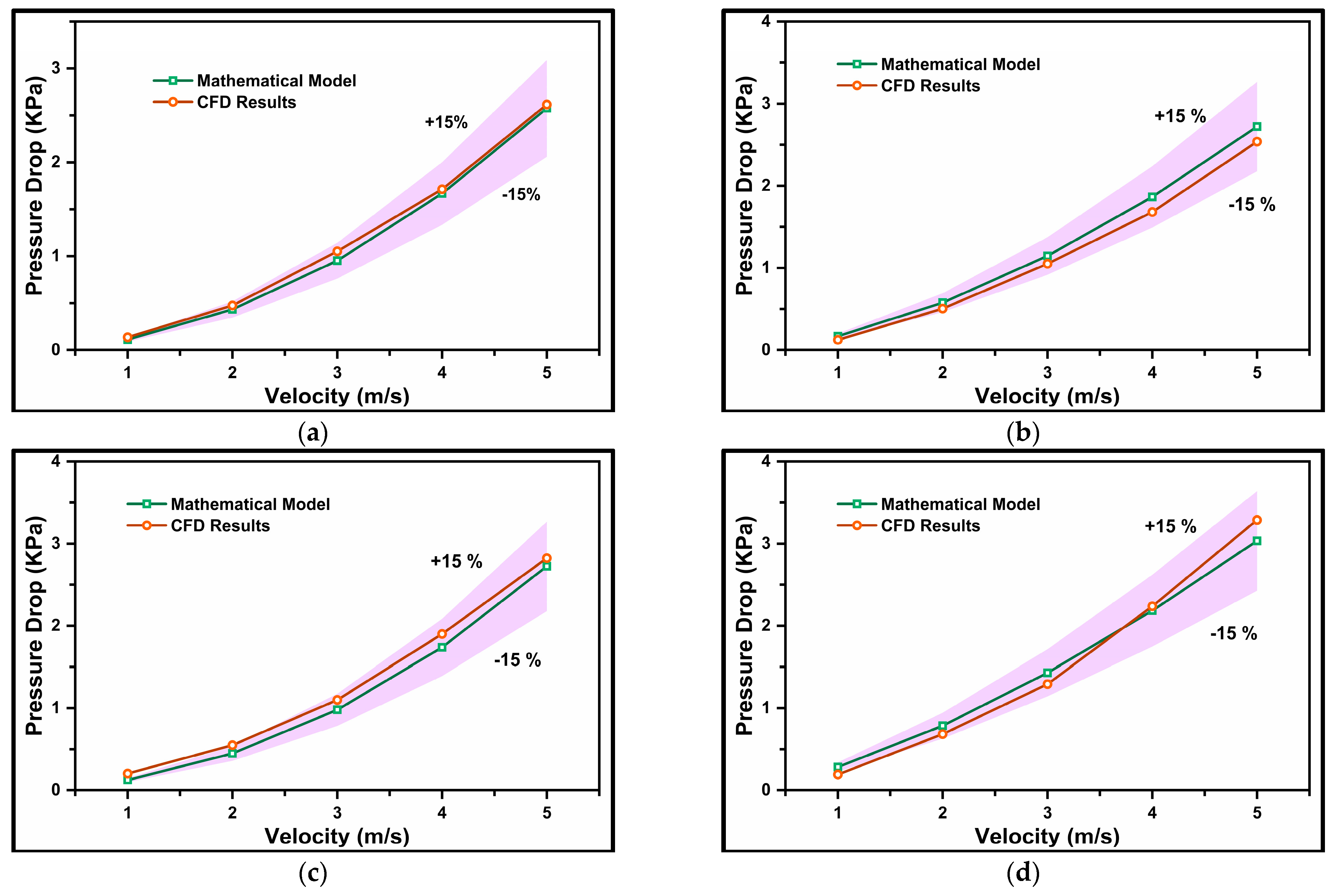
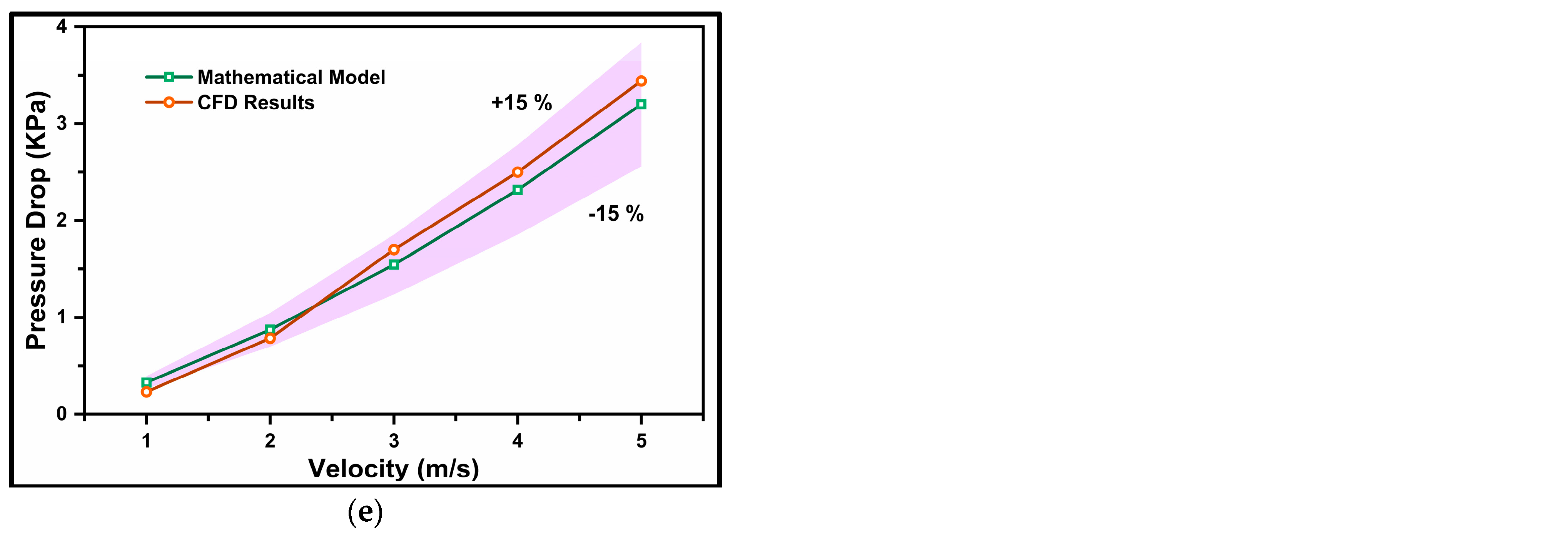
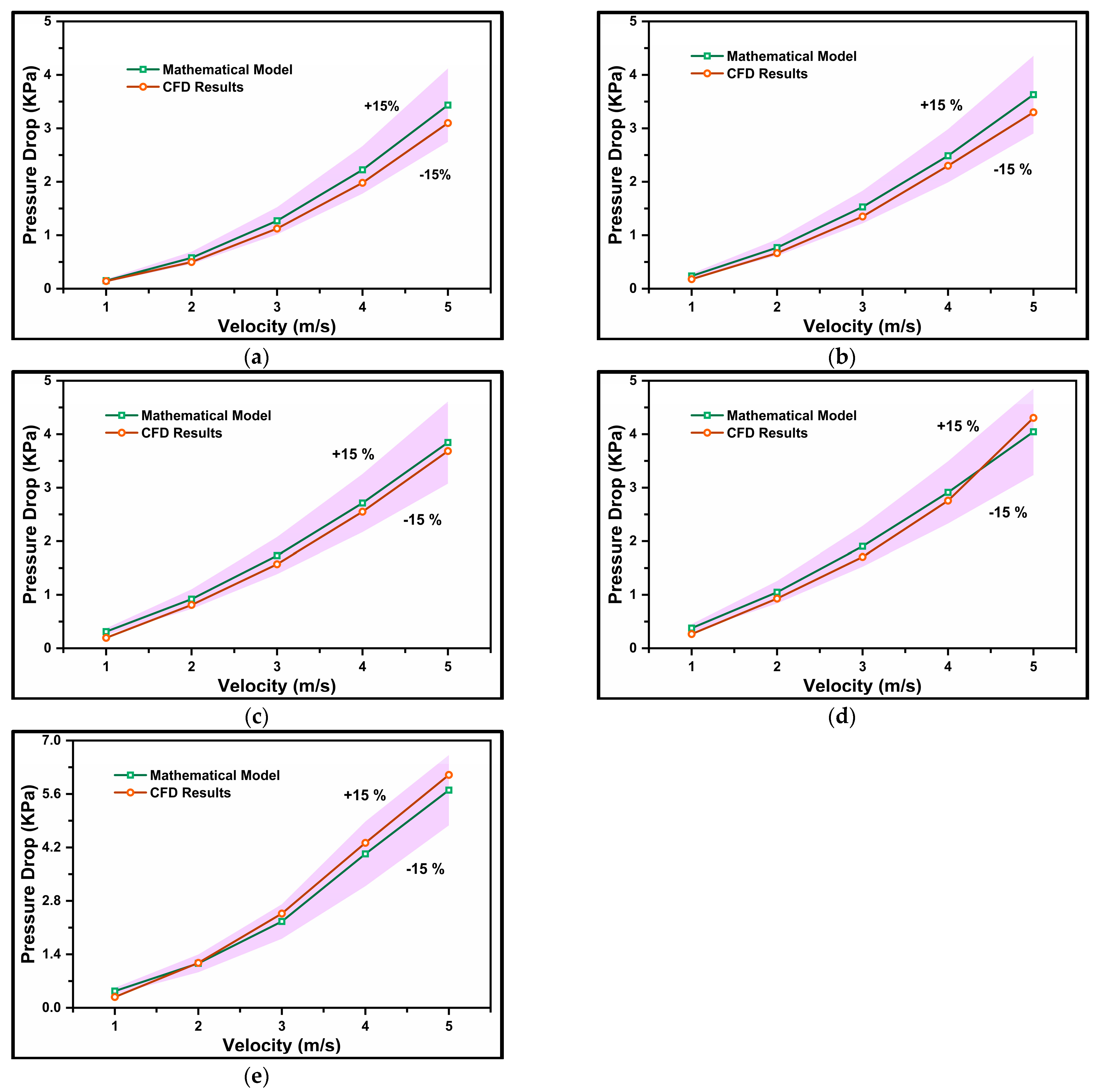
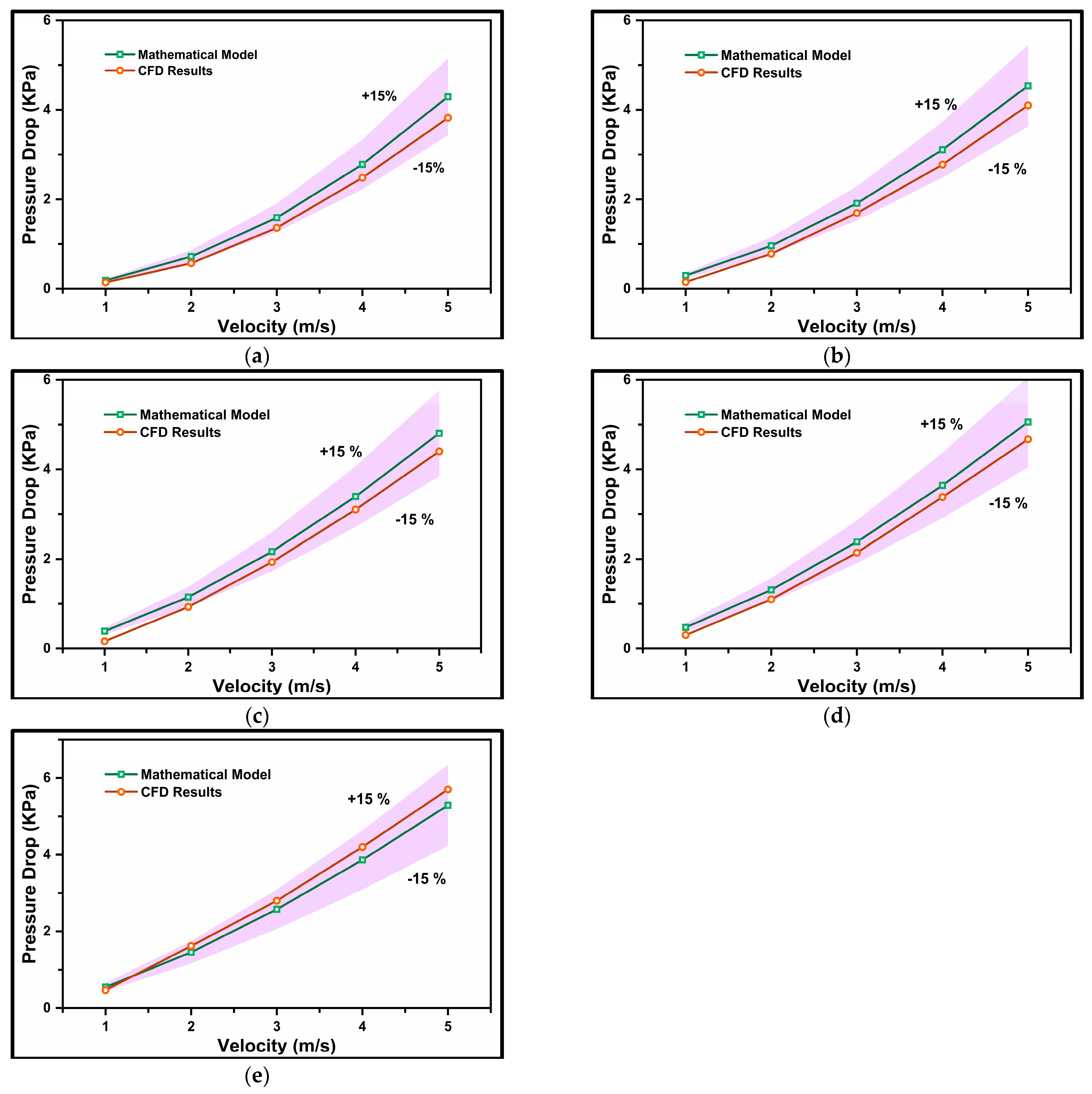
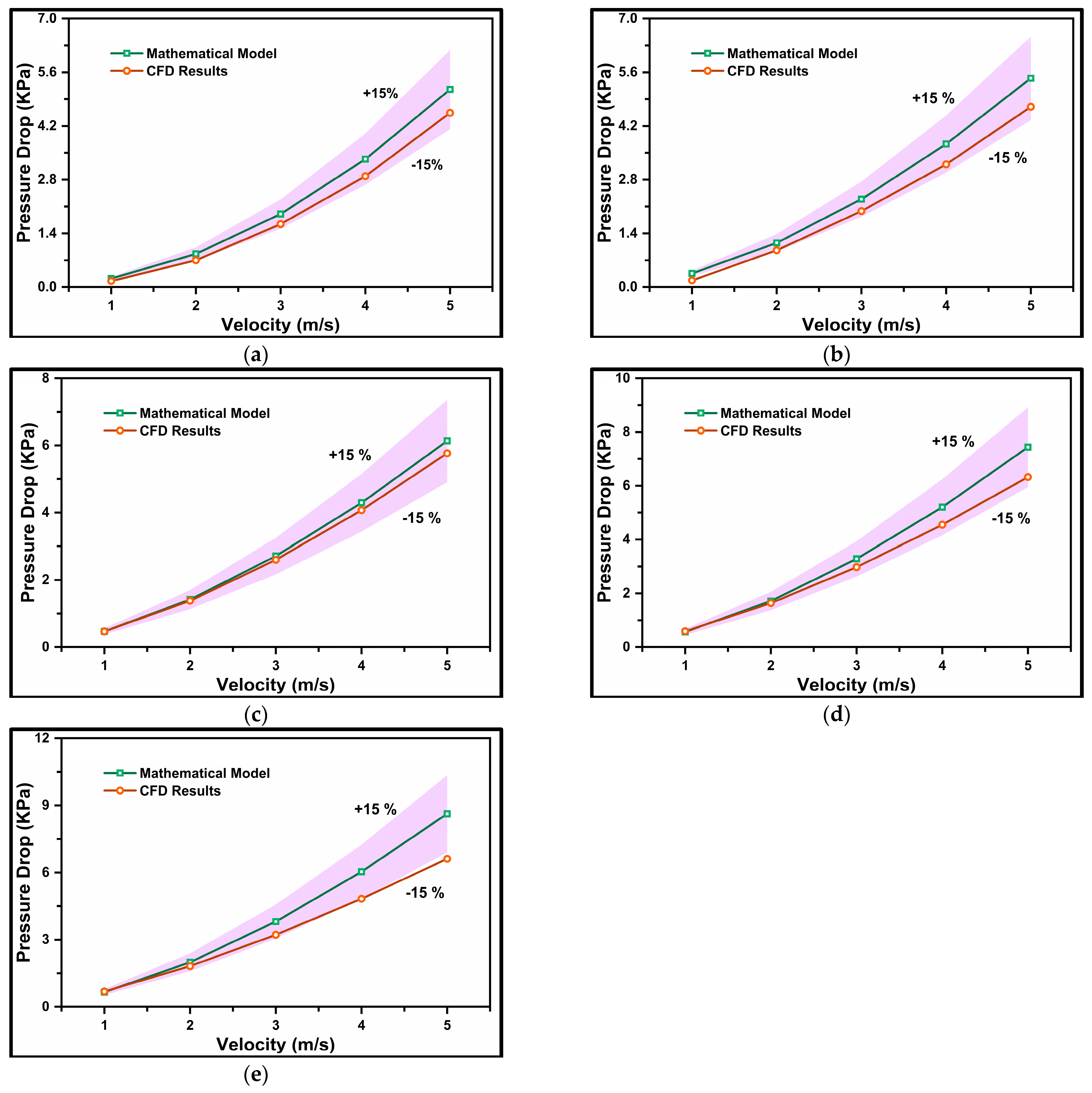
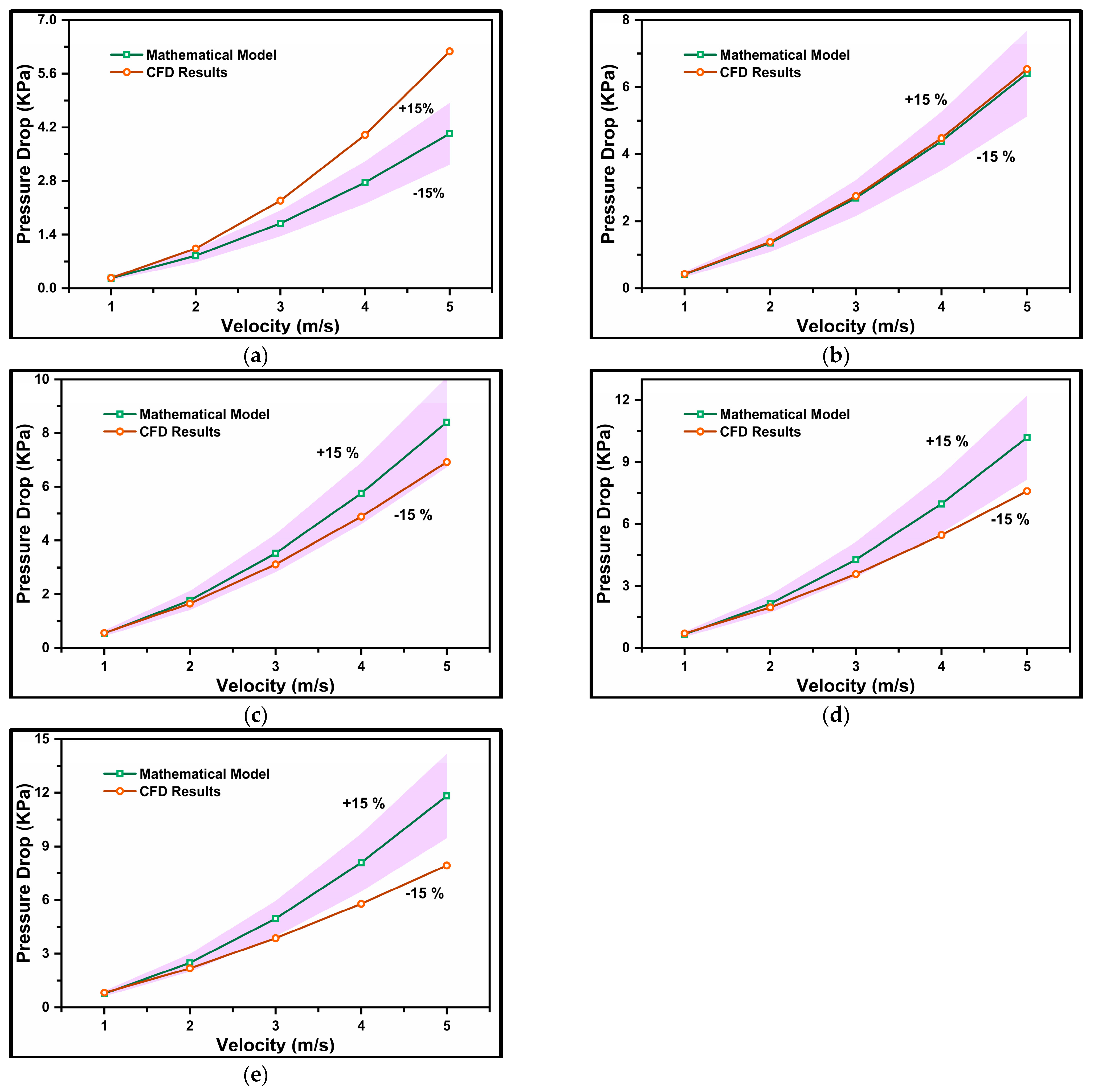

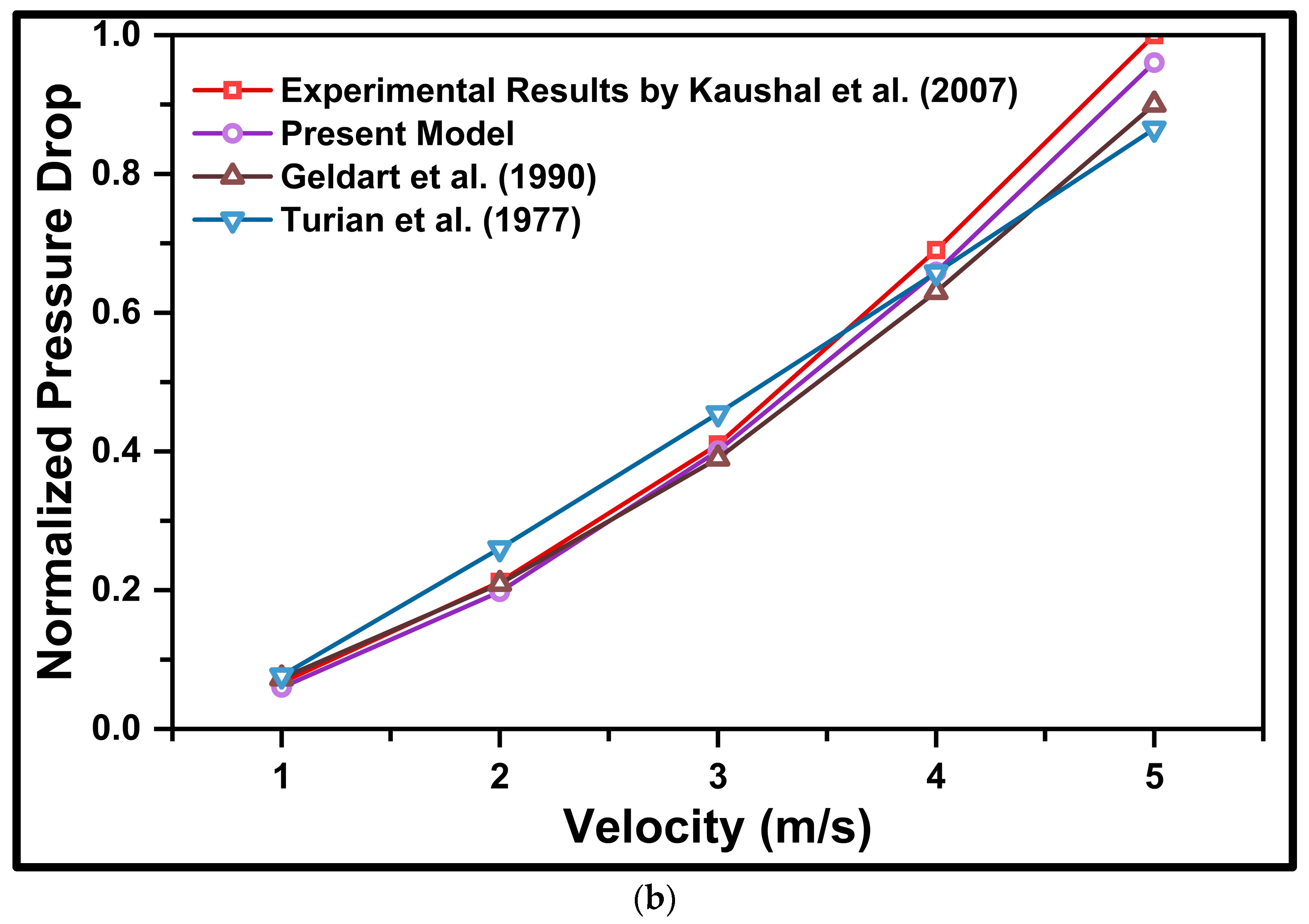
| Input Parameter | Magnitude |
|---|---|
| Solver typed | Pressure based |
| CFD model | Eulerian–Eulerian multiphase model |
| Turbulence model | RNG k-ε model |
| Time | Steady-state |
| Phases | Two phases (glass beads + water) |
| Pipe wall | No slip condition |
| Wall behavior | No slip model |
| Convergence criteria | 10−4 |
| Fluid property | Constant at 27 °C |
| Solution methods | Diffusive second order upwind SIMPLE scheme is applied for pressure, volume fraction, turbulent kinetic energy, and dissipation rate |
Disclaimer/Publisher’s Note: The statements, opinions and data contained in all publications are solely those of the individual author(s) and contributor(s) and not of MDPI and/or the editor(s). MDPI and/or the editor(s) disclaim responsibility for any injury to people or property resulting from any ideas, methods, instructions or products referred to in the content. |
© 2024 by the authors. Licensee MDPI, Basel, Switzerland. This article is an open access article distributed under the terms and conditions of the Creative Commons Attribution (CC BY) license (https://creativecommons.org/licenses/by/4.0/).
Share and Cite
Joshi, T.; Gupta, A.; Parkash, O.; Gallegos, R.K.B.; Oo, N.L.; Krishan, G. Mathematical Formulations for Predicting Pressure Drop in Solid–Liquid Slurry Flow through a Straight Pipe Using Computational Modeling. Mathematics 2024, 12, 2879. https://doi.org/10.3390/math12182879
Joshi T, Gupta A, Parkash O, Gallegos RKB, Oo NL, Krishan G. Mathematical Formulations for Predicting Pressure Drop in Solid–Liquid Slurry Flow through a Straight Pipe Using Computational Modeling. Mathematics. 2024; 12(18):2879. https://doi.org/10.3390/math12182879
Chicago/Turabian StyleJoshi, Tanuj, Abhinav Gupta, Om Parkash, Ralph Kristoffer B. Gallegos, Nay Lin Oo, and Gopal Krishan. 2024. "Mathematical Formulations for Predicting Pressure Drop in Solid–Liquid Slurry Flow through a Straight Pipe Using Computational Modeling" Mathematics 12, no. 18: 2879. https://doi.org/10.3390/math12182879
APA StyleJoshi, T., Gupta, A., Parkash, O., Gallegos, R. K. B., Oo, N. L., & Krishan, G. (2024). Mathematical Formulations for Predicting Pressure Drop in Solid–Liquid Slurry Flow through a Straight Pipe Using Computational Modeling. Mathematics, 12(18), 2879. https://doi.org/10.3390/math12182879











